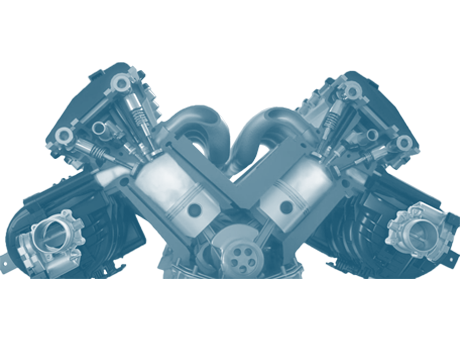Oil sump
The oil sump is a component of the engine lubrication system in motor vehicles. It is also known as the oil tray.
Function
The oil sump contains the engine oil required for lubrication. The oil is extracted from it by an oil pump and conveyed into the engine block’s oil ducts via the oil filter. The oil then flows back into the oil sump from the lubrication points.
The oil sump is generally bolted on at the lowest point of the engine, below the crank mechanism on the crankcase. It features an oil drain plug, the opening of which in the oil sump allows the oil to drain out when changed.
 However, the oil sump is not merely a storage container. It performs one additional function in defoaming and cooling the heated oil which flows back into the sump.
The oil sump is generally made of deep-drawn sheet metal. The oil sump’s cooling effect can be improved through the addition of fins on the housing.
Unlike in passenger cars, plastic oil sumps can also be found in commercial vehicles. Oil sumps in passenger cars must be made of more sturdy aluminium or steel, partly due to their strength.
However, the oil sump is not merely a storage container. It performs one additional function in defoaming and cooling the heated oil which flows back into the sump.
The oil sump is generally made of deep-drawn sheet metal. The oil sump’s cooling effect can be improved through the addition of fins on the housing.
Unlike in passenger cars, plastic oil sumps can also be found in commercial vehicles. Oil sumps in passenger cars must be made of more sturdy aluminium or steel, partly due to their strength.
Safety and value retention
The oil sump is normally very robust and durable. Nonetheless, it can be damaged by hitting the ground while driving or due to age-related defects in the seals. If the oil sump is damaged, it is important to seek out a workshop immediately to prevent oil from leaking. A continuous loss of oil can lead to the engine no longer receiving adequate lubrication. This can result in the risk of engine damage, which will incur significant repair costs. When topping up oil, it is absolutely imperative not to fill the oil sump above its maximum limit. There is a danger of the crankshaft being dipped in the oil while the engine is running and consequently causing small air bubbles to spread through the oil. Such air bubbles can cause lubrication to be less effective. This includes when they burst in the lubricating film in the cylinder when this is triggered by high heat levels. Furthermore, frothy oil has worse flow properties when in a cold state.
Protection of the environment
Action must be taken quickly if the oil sump is leaking. Any escaping oil can contaminate groundwater and must be neutralised using a binding agent.



